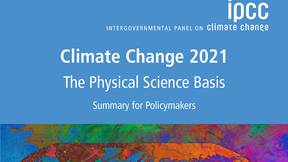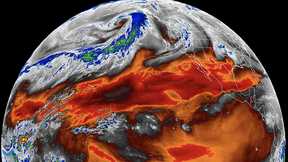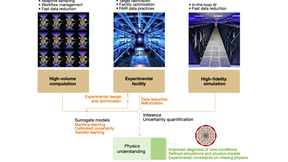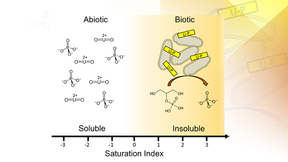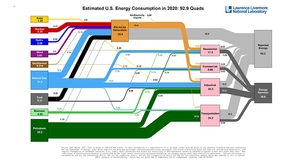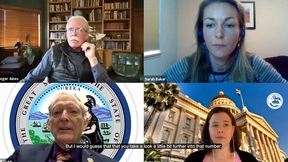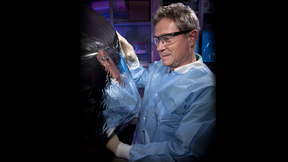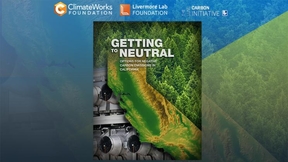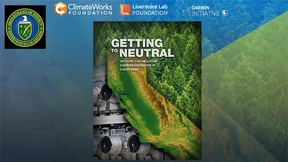Back
Atmospheric, Earth, and Energy
IPCC reports climate change is widespread, rapid and intensifying
Scientists are observing changes in the Earth’s climate in every region and across the whole climate system, according to the latest Intergovernmental Panel on Climate Change (IPCC) Report, released today. Many of the observed climate changes are unprecedented in thousands, if not hundreds of thousands of years, and some of the changes already set in motion — such as…
Satellites may have underestimated warming in the lower atmosphere
New research by Lawrence Livermore National Laboratory (LLNL) climate scientists and collaborators shows that satellite measurements of the temperature of the troposphere (the lowest region of the atmosphere) may have underestimated global warming over the last 40 years. The research appears in the Journal of Climate. The team studied four different properties of tropical…
The data-driven future of extreme physics
By applying modern machine learning and data science methods to “extreme” plasma physics, researchers can gain insight into our universe and find clues about creating a limitless amount of energy. In a recent perspective published in Nature, Lawrence Livermore National Laboratory (LLNL) scientists and international collaborators outline key challenges and future directions…
Observations show marine clouds amplify warming
A new analysis of satellite cloud observations finds that global warming causes low-level clouds over the oceans to decrease, leading to further warming. The work, led by researchers at Lawrence Livermore National Laboratory (LLNL), in collaboration with colleagues from Scripps Institution of Oceanography and the NASA Langley Research Center, appears online in Nature…
It’s only natural: Using environmental microbes to remove uranium from groundwater
Uranium contamination of soils and groundwater in the United States represents a significant health risk and will require multiple remediation approaches. Remediation strategies for uranium-contaminated sites have been the focus of research for decades due to the former production of nuclear materials across the United States. The U.S. Environmental Protection Agency (EPA)…
Pandemic drives down U.S. energy use in 2020
Americans used approximately 7 percent less energy in 2020, due in part to the COVID-19 pandemic, according to energy flow charts released by Lawrence Livermore National Laboratory (LLNL). Each year, LLNL releases flow charts that illustrate the nation's consumption and use of energy. Americans used 92.9 quads (quadrillion BTU) of energy, which is 7.2 quads less or 7…
COVID-19 HPC Consortium reflects on past year
COVID-19 HPC Consortium scientists and stakeholders met virtually on March 23 to mark the consortium’s one-year anniversary, discussing the progress of research projects and the need to pursue a broader organization to mobilize supercomputing access for future crises. The White House announced the launch of the public-private consortium, which provides COVID-19 researchers…
Improved models of cloud drizzle-turbulence interactions could enhance future climate predictions
Large decks of closely spaced stratocumulus clouds hover over the ocean and cover vast areas — literally thousands of miles of the subtropical oceans — and linger for weeks to months. These marine clouds reflect more solar radiation than the surface of the ocean, providing a cooling effect on the Earth’s surface. Stratocumulus clouds are an important component of the Earth…
Natural variations help resolve a climate puzzle
New research shows that naturally occurring climate variations help to explain a long-standing difference between climate models and satellite observations of global warming. Satellite measurements of global-scale changes in atmospheric temperature began in late 1978 and continue to the present. Relative to most model simulations, satellite data has consistently shown less…
Greenland landscape history preserved under ice sheet
Greenland wasn’t always covered in ice. In fact, within the last 1.1 million years, Greenland had thriving vegetation and ecosystems. That is the conclusion of an international group of researchers, including a scientist from Lawrence Livermore National Laboratory (LLNL), that analyzed sediment at the base of the Camp Century ice core (1.4 kilometers deep) collected in…
No miracles required: Scientists, industry experts agree California’s carbon capture and storage can be a reality
When it comes to California implementing a carbon capture and storage program to reach the state’s goal of carbon neutrality by 2045, nothing too newfangled needs to take place. During a forum titled “Carbon Capture and Sequestration in California: Regional Insights and Community Attitudes,” a group of scientists, California policymakers and industry leaders came together…
Ten-year anniversary of Fukushima observed
Ten years ago today, on March 11, 2011, a 9.0 Richter-scale earthquake and tsunami in Japan resulted in severe damage to the Fukushima Dai-ichi nuclear power plant and also led to releases of radioactivity into the environment. That same day, the U.S. Department of Energy (DOE) activated Lawrence Livermore National Laboratory’s National Atmospheric Release Advisory Center …
Seismic Sleuths Set Off the Source Physics Experiment
The Source Physics Experiment improves the identification of nuclear events, and the ability to tell them apart from non-nuclear occurrences.
Lab report outlines updates to state’s regulations for carbon capture, storage in effort to achieve neutrality
To reach economy-wide carbon neutrality by 2045 or earlier, California will likely have to capture, transport and geologically store tens of millions of tons per year of carbon dioxide (CO2) from large sources and from the atmosphere. California has an extensive regulatory framework that is rigorous, robust and will safeguard the environment, public health and safety…
Lab launches interdisciplinary Space Science Institute
What are the next world-class, game-changing concepts and technologies that will address the most important questions in astrophysics or planetary science? Lawrence Livermore National Laboratory (LLNL) researchers will soon be better equipped to answer this question with the launch this month of a new Space Science Institute (SSI), intended to boost cross-discipline…
Physics of particle dispersion may lend insight into reducing the airborne spread of COVID-19 virus
Lawrence Livermore National Laboratory (LLNL) scientists are leveraging their extensive experience studying the movement of airborne hazards to better understand the movement of virus-like particles through the air and to identify effective countermeasures. DNATrax released in a conference room.While the burden of airborne diseases is known to be large, its true scope is…
Moving to carbon neutrality: one year later
One year after publishing the groundbreaking "Getting to Neutral: Options for Negative Carbon Emissions in California," Lawrence Livermore National Laboratory (LLNL) has become a trusted adviser in the discussion of how to remove carbon dioxide from the air. In the report, LLNL scientists identified a robust suite of technologies to help California clear the last hurdle…
Lab researchers explore ‘learn-by-calibration’ approach to deep learning to accurately emulate scientific process
Lawrence Livermore National Laboratory (LLNL) computer scientists have developed a new deep learning approach to designing emulators for scientific processes that is more accurate and efficient than existing methods. In a paper published by Nature Communications, an LLNL team describes a “Learn-by-Calibrating” (LbC) method for creating powerful scientific emulators that…
Lab teams earn DOE Secretary Achievement Awards
Lawrence Livermore National Laboratory (LLNL) employees, participating in 10 project teams, recently earned Department of Energy (DOE) Secretary Achievement Awards. Representing some of the highest internal, non-monetary recognition that DOE employees and contractors can receive, these awards recognize DOE employees and contractors for their service and contributions to…
Lab team earns DOE Secretary Achievement Award
Lawrence Livermore National Laboratory‘s (LLNL) "Getting to Neutral" Carbon Emissions Team has earned a Department of Energy (DOE) Secretary Achievement Award for its groundbreaking work on how California could reach the goal of becoming carbon neutral by 2045. Representing some of the highest internal, non-monetary recognition that DOE employees and contractors can…


